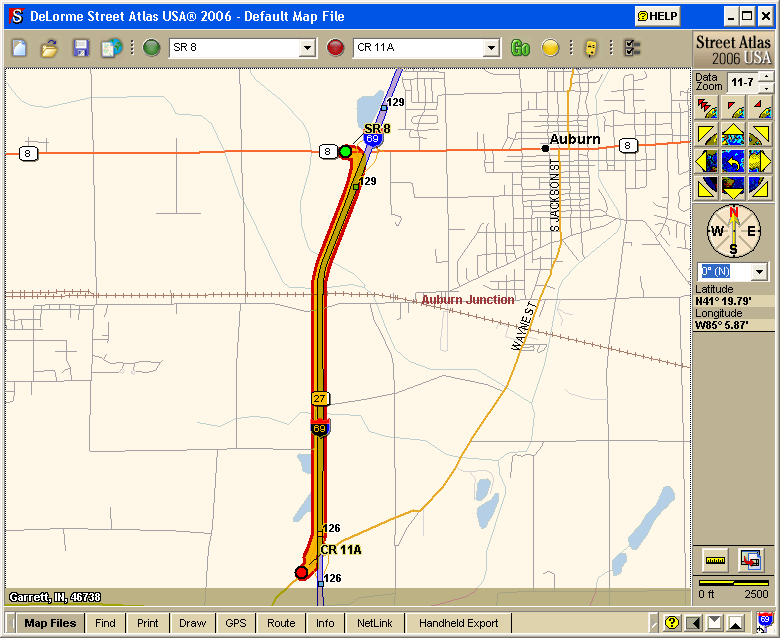
- #Street atlas 2015 change route pointer drivers
- #Street atlas 2015 change route pointer driver
- #Street atlas 2015 change route pointer zip
- #Street atlas 2015 change route pointer free
#Street atlas 2015 change route pointer drivers
The Target Icon allows drivers to use the interactive map to select destinations.

#Street atlas 2015 change route pointer free
Luckily, BMW provides users in the US region with free traffic information and keeps you informed of the latest road conditions. Traffic Icon Provides Current Traffic Information It is extremely useful in keeping drivers updated on traffic status and helps you arrive at the destination safely and efficiently.ĥ. The BMW Advanced Real Time Traffic Information (ARTTI) provides free traffic updates to users of the US region. Advanced Real Time Traffic Information (ARTTI) It can guide you to avoid traffic or adverse road conditions and recommend new route options. BMW navigation’s Route Preferences option provides alternative route options.

You want to find the shortest route possible while avoiding the freeways because of traffic and accidents. You need to get home on a day with bad weather.
#Street atlas 2015 change route pointer driver
Some of the voice instructions include announcement before turning, entering or exiting a freeway, and before the driver is about to reach the destination.ģ. Voice instructions can accurately guide drivers turn by turn. You can turn on or off BMW’s navigation voice as you prefer when you check or uncheck this option. You can also easily recall previously entered destinations for a quick startĢ.
#Street atlas 2015 change route pointer zip
You can find destinations by entering the house number, street, city, state, and zip code. This function allows you to quickly access the navigation’s “search address” function. Finish Flag Icon Indicates the Destination

Look at the stats: for the area you've chosen, you can read about its rank, see the difference between proportion of neighbourhoods in each percentile from both years and order the neighbourhoods from most to least deprived in the Neighbourhood (LSOA) data tab.1.Indices data is displayed at neighbourhood or Lower-layer Super Output Area level, which roughly equates to postcodes. Choose a place: users can click on locations directly from either map, scroll or zoom in and use the Select Location tab to search for postcodes, a Local Authority or place.Choose a domain: users can explore each of the seven indices domains, including supplementary indices, individually or the overall IMD measure using the icon buttons at the top of the screen.Maps are displayed side-by-side and can be switched on, off or viewed together using the toggle switches in the top right of the page.Darker colours indicate more deprived areas. It also facilitates a comparison of relative rankings across areas with the IoD2015. The IoD2019 explore allows users to explore the range of indices data and search local areas by name and postcode.


 0 kommentar(er)
0 kommentar(er)
